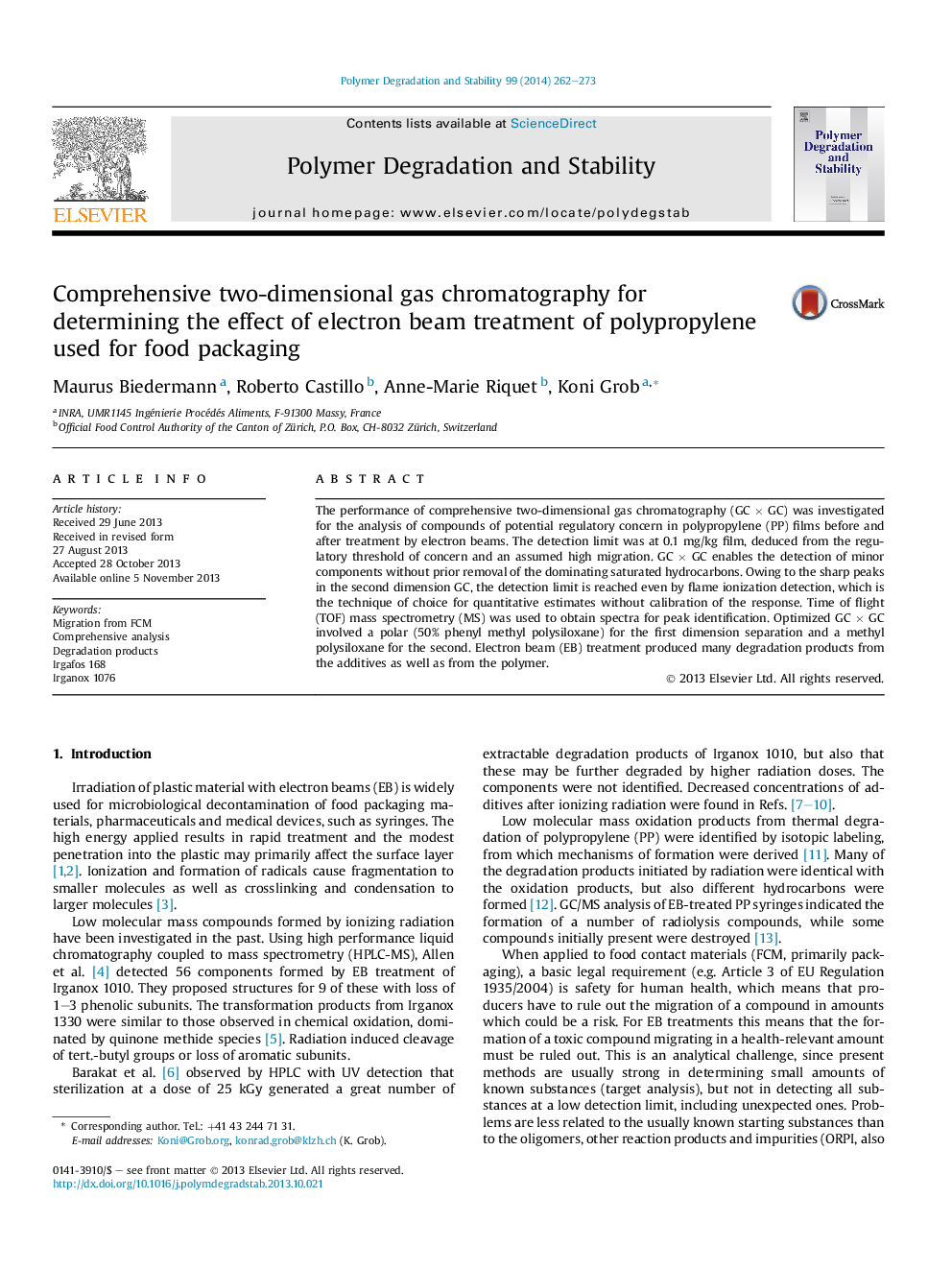| Article ID | Journal | Published Year | Pages | File Type |
|---|---|---|---|---|
| 5202113 | Polymer Degradation and Stability | 2014 | 12 Pages |
The performance of comprehensive two-dimensional gas chromatography (GCÂ ÃÂ GC) was investigated for the analysis of compounds of potential regulatory concern in polypropylene (PP) films before and after treatment by electron beams. The detection limit was at 0.1Â mg/kg film, deduced from the regulatory threshold of concern and an assumed high migration. GCÂ ÃÂ GC enables the detection of minor components without prior removal of the dominating saturated hydrocarbons. Owing to the sharp peaks in the second dimension GC, the detection limit is reached even by flame ionization detection, which is the technique of choice for quantitative estimates without calibration of the response. Time of flight (TOF) mass spectrometry (MS) was used to obtain spectra for peak identification. Optimized GCÂ ÃÂ GC involved a polar (50% phenyl methyl polysiloxane) for the first dimension separation and a methyl polysiloxane for the second. Electron beam (EB) treatment produced many degradation products from the additives as well as from the polymer.
